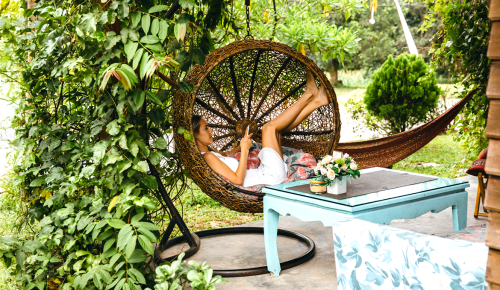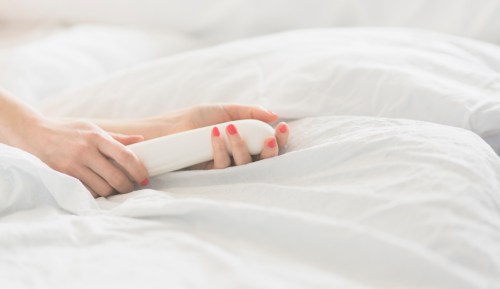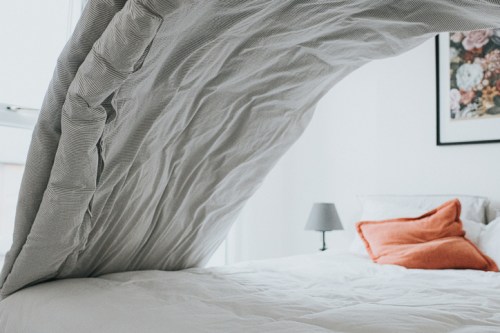Our editors independently select these products. Making a purchase through our links may earn Well+Good a commission
There’s no denying at this point that the planet is headed for the toilet. (Seriously. No one should be denying it.) Maybe you’re well aware and rage-watch Greta Thunberg’s speech at the UN Climate Action Summit about 40 times a day, wondering how things got this bad, how you can help, and whether you’re majorly contributing to the problem. Turns out we can all wise up about something brought to my attention at, of all places, Butt Con, a convention that took place in New York City earlier this year, dedicated to (obviously) all things derrière. What I learned is that bidets and eco-friendly bathroom products are here to save the world.
“Right now, 15 million trees are getting cut down every single year because of toilet paper,” says Miki Agrawal, founder of bidet company Tushy. “The Canadian Boreal Forest is literally getting decimated every year just for toilet-paper consumption.”
Let’s not forget that we’re using toilet paper for the express purpose to wipe away waste—yet, it’s creating more of it and also depleting our resources in the process. “We flush about 30,000 trees per day in toilet paper,” says Ashlee Piper, sustainability expert and author of Give a Sh*t: Do Good. Live Better. Save the Planet. “Conventional toilet paper, especially so-called ‘flushable wipes,’ are terrible for the environment and plumbing, causing costly fatbergs.”
“We flush about 30,000 trees per day in toilet paper,” —sustainability expert Ashlee Piper
Fatbergs, for the delightfully uninformed, are congealed masses of biodegradable material that form in sewer systems, where all toilet paper ends up—or, at least, probably should from a public-health POV. That’s because used TP isn’t really recyclable. At no point after wiping are you going to be like, “Welp, gonna stick this in my back pocket for round two!” If you are doing this, A+ for the commitment, but please stop.
So, why aren’t we making like many other nations in the world and banding together on the bidet wagon? Let’s take a look at how we’ve gotten to where we are, choice-wise, as a means for slowing our roll on using all these rolls and developing more eco-friendly bathroom habits.
Why we wipe how we wipe
Imperial courts in 6th century China used tree bark and silk paper for wiping, but TP as we know it wasn’t popularized, Americanized, and commercialized, until the 1800s. That’s when American inventor Joseph Gaetty sold the first toilet paper as a way to treat hemorrhoids. The product came in a package of 500 papers, scented and watermarked with the manufacturer’s name. It was a low-key commercial failure, but the Scott brothers—yes, those Scott brothers—saw an opportunity. They came out with their own wipeable papers in 1867, and the rest is waste-making history.
Well, not entirely. While that tale explains how and why we decided to roll with the paper roll, it doesn’t touch on why Americans, specifically, never boarded the popular-elsewhere bidet train. A couple of theories posit why that is, and a popular one has to do with not wanting to embrace the French way. “When American soldiers went to fight in World War II, they would go to French brothels and see bidets, and they associated bidets with something sexual,” Agrawal says.
That sort of puritanical mentality continues on in many populations today in America, whether passively or intentionally. Many see bidets as something taboo, dirty, or even just strangely intimate for a bathroom habit. And sure, bidets can certainly skew wet and wild for a novice squatter, but there are great reasons to get European about our bathroom habits.
Looks like the bidet train is leaving the station
This past January, USA Today reported that bidet seats and toilets represent a $106 million category in the United States and is expected to grow 15 percent annually through 2021, according to BRG Building Solutions’ October 2018 Markets report. And that’s good news for the environment and our health. “[Bidets] save trees and help the climate, but they also help out with things like hemorrhoids and anal fissures,” Mark Hyman, MD, says. “It’s actually a much better way of dealing with your poop than the way we do it in America. When people travel anywhere else in the world, you realize that’s how most of the rest of the world does it.”
“When people travel anywhere else in the world, you realize that’s how most of the rest of the world does it.” —Mark Hyman, MD, on bidets
Thanks to new innovations at varying price points, it’s easy to see how the popularity could become widespread. Options like the TOTO Washlet seat (from $499) give you the full bidet experience. For less of a financial investment and the same impact, options, like the Tushy bidet ($69), can attach onto an existing toilet, with no extensive plumbing or installation help required. And this summer, Sonny—a sleek-looking, handheld, portable bidet—launched an Indiegogo campaign and attracted, to date, more than $1 million in funding and nearly 9,000 backers. (It’s available for pre-order for $99, with an estimated ship date of March 2020). Tushy also offers a travel bidet ($29), which looks similar to many other basic, lower-tech options available on Amazon.
Eco-friendly bathroom ideas for those not ready to embrace the bidet
There is a way to split the difference if you’re not ready to go full bidet: Try using paper products made from easily replenished materials, like bamboo and sugarcane.
Piper suggests the Australian subscription service Who Gives a Crap, which sells 100-percent recyclable toilet paper and donates 50 percent of proceeds to develop toilets for those in need. And with Pure Planet Club, tree- and plastic-free paper arrives in recycled cardboard packaging to your home every 4 to 20 weeks.
Beyond paper, Piper suggests upping your eco-friendly bathroom quotient by “shoring up any toilet leaks and installing an ultra-low-flow toilet,” which use an average of 1.6 gallons per flush compared to 3.6 gallons per flush in older toilet models.
On a personal note, the bidet still intimidates me a bit—but I have committed to Tushy’s bamboo toilet paper and am pleased to report that it does the job it’s meant to do. And so, I say again: In its conventional form, toilet paper has one clear destiny—a utilitarian purpose, which is a voyage down the drain. No more, no less. So, isn’t it time we embrace the eco-friendly bathroom in at least some sense? Because it does seem that the world depends on it.
Eco-friendly bathroom ideas aside, here’s how to tell if your poop is healthy. And here’s why core work is best for the um, the flow of digestion.
Sign up for the Well+Good SHOP Newsletter
Get exclusive deals on wellness, beauty, fitness, and food products that have been hand-picked by our editors.
Got it, you've been added to our email list.











